Overview
In the fast-paced world of eCommerce, many founders face a common challenge: ensuring their mobile applications truly resonate with users. When load times lag, or the checkout process feels cumbersome, it can lead to frustration and abandoned carts. This pain point is not just a technical issue; it affects the very essence of customer satisfaction and loyalty. Imagine a potential buyer, excited to make a purchase, only to be met with delays and complexities. It’s disheartening, isn’t it?
To foster a more nurturing shopping experience, it’s vital to integrate essential features into your mobile app. Fast load times are crucial, as they set the tone for user interaction. A mobile-friendly checkout process can make all the difference, allowing customers to complete their purchases effortlessly. Personalization speaks to the heart of the user experience, making each shopper feel valued and understood. Additionally, offering diverse payment options ensures that every customer finds a method that suits them.
High-quality product images and engaging descriptions can draw users in, while customer reviews provide the social proof that fosters trust. Push notifications remind users of their interests, and live chat support offers immediate assistance, creating a sense of care and connection. These features not only enhance user engagement but also improve conversion rates and build lasting customer loyalty.
At RNO1, we understand the importance of these elements in crafting a seamless shopping experience. By focusing on these essential features, you can create an environment where customers feel valued and supported, ultimately leading to a more satisfying and successful eCommerce journey.
Introduction
In the competitive landscape of online retail, developing an effective eCommerce mobile application is essential for success. With mobile devices projected to account for a staggering 78% of global e-commerce traffic, businesses face the pressing challenge of not only attracting users but also retaining them through seamless experiences. This can feel overwhelming, as the pressure to meet and exceed customer expectations can weigh heavily on tech startup founders.
But you are not alone in this journey. This article explores nine essential features that can truly transform an eCommerce mobile app from a simple shopping tool into a powerful platform that enhances user engagement and drives sales. Together, let’s discover how brands can ensure they are not just meeting, but exceeding customer expectations in this dynamic environment.
RNO1: Comprehensive Mobile App Development for eCommerce
In the fast-paced world of online retail, many businesses struggle to create an ecommerce mobile application that resonates with their customers. This challenge can lead to missed opportunities and frustration, especially when navigating the complexities of application development. RNO1 understands these pain points deeply and excels in crafting thorough applications tailored specifically for online retail businesses. Their approach combines innovative UX design, Digital Strategy, and Web & App Development with strategic digital solutions, enabling brands to provide seamless shopping experiences.
As portable devices are projected to capture 78% of global e-commerce traffic, the need for expertise in ecommerce mobile application development has never been more critical. RNO1's team is dedicated to guiding brands from the initial ideation phase all the way to a successful launch. With generating up to seven times more revenue per individual and contributing 40-50% of online sales for retail brands, RNO1 ensures that each ecommerce mobile application is meticulously optimized for engagement and conversion rates.
RNO1's results-oriented method emphasizes achieving quantifiable success through cooperative strategies, positioning clients for sustainable growth in the competitive online marketplace. By prioritizing client experience in app development strategies, businesses can reflect RNO1's commitment to design-driven solutions that foster both branding and digital growth. This nurturing approach not only enhances user engagement but also cultivates a loyal customer base.
To gain deeper insights into how RNO1 can support your journey, we invite you to explore our featured case study. Together, we can navigate the complexities of online retail and create solutions that truly make a difference.
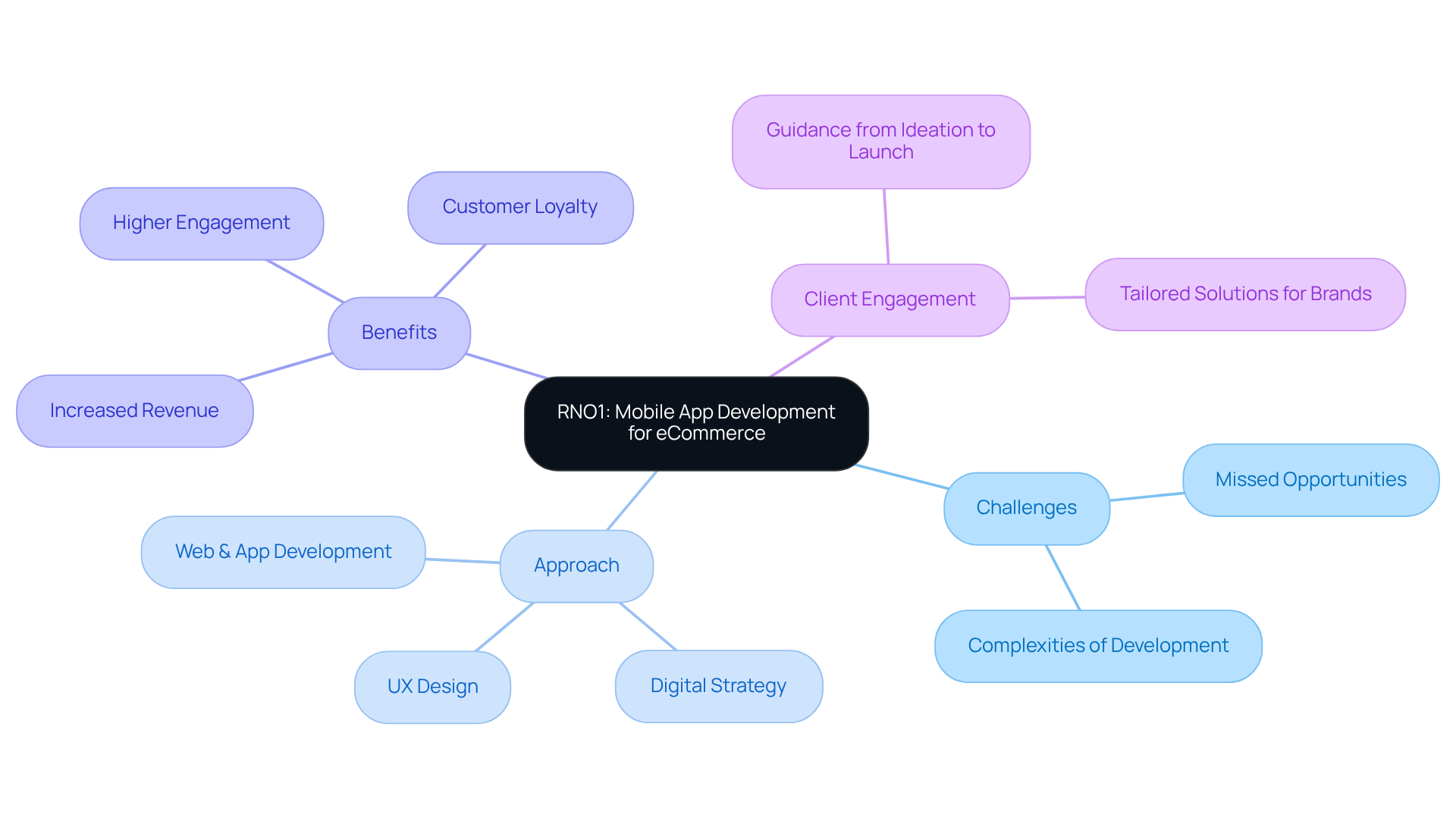
Fast Load Times: Enhance User Experience and Retention
Quick load times are essential for enhancing the experience in an ecommerce mobile application, and we understand how frustrating it can be when an ecommerce mobile application doesn’t load quickly. Research shows that:
- 53% of individuals abandon applications that take longer than three seconds to load.
- 61% of smartphone owners won’t wait more than five seconds.
This highlights the urgency for optimization, as many of us have felt that pang of impatience. To meet consumer expectations, which increasingly demand loading times under two seconds—20% of mobile users anticipate apps to load in this timeframe—developers should focus on strategies that truly make a difference.
Optimizing images, minimizing HTTP requests, and implementing effective caching techniques, such as:
- Utilizing service workers for PWAs
- Edge caching with CDNs
can significantly enhance load speed. These measures not only improve performance but also foster retention and satisfaction, as an ecommerce mobile application with faster loading times leads to a more engaging and seamless shopping experience.
We encourage you to regularly to ensure optimal load times, creating a more pleasant experience for your users.

Mobile-Friendly Checkout Process: Streamline Transactions
A mobile-friendly checkout process is crucial for the success of an ecommerce mobile application, as it directly impacts conversion rates and client satisfaction. Many online shoppers face frustration during checkout, leading to abandoned carts and lost sales. Implementing features like guest checkout options allows individuals to finalize purchases without the hassle of creating an account, significantly reducing friction. Additionally, auto-fill for address fields simplifies data entry, and clear progress indicators keep customers informed throughout their transaction.
Research shows that simplifying the checkout experience can lead to a remarkable 35.26% increase in conversion rates, potentially recovering up to $260 billion in lost order revenue. It’s concerning to note that the average cart abandonment rate for smartphone users is a staggering 85.65%. This highlights the urgent need for brands to address these challenges. By focusing on enhancements like these, businesses can effectively minimize cart abandonment, which currently affects around 70% of online shoppers.
Experts emphasize that a smooth experience on handheld devices is not just a convenience; it’s an essential requirement in today’s digital landscape for an ecommerce mobile application, where 76.38% of cart abandonments occur on such devices. Therefore, prioritizing a is essential for online retail businesses that utilize an ecommerce mobile application to thrive. Remember, creating a seamless experience isn’t merely about technology; it’s about understanding your customers’ needs and fostering a supportive environment that encourages them to complete their purchases.
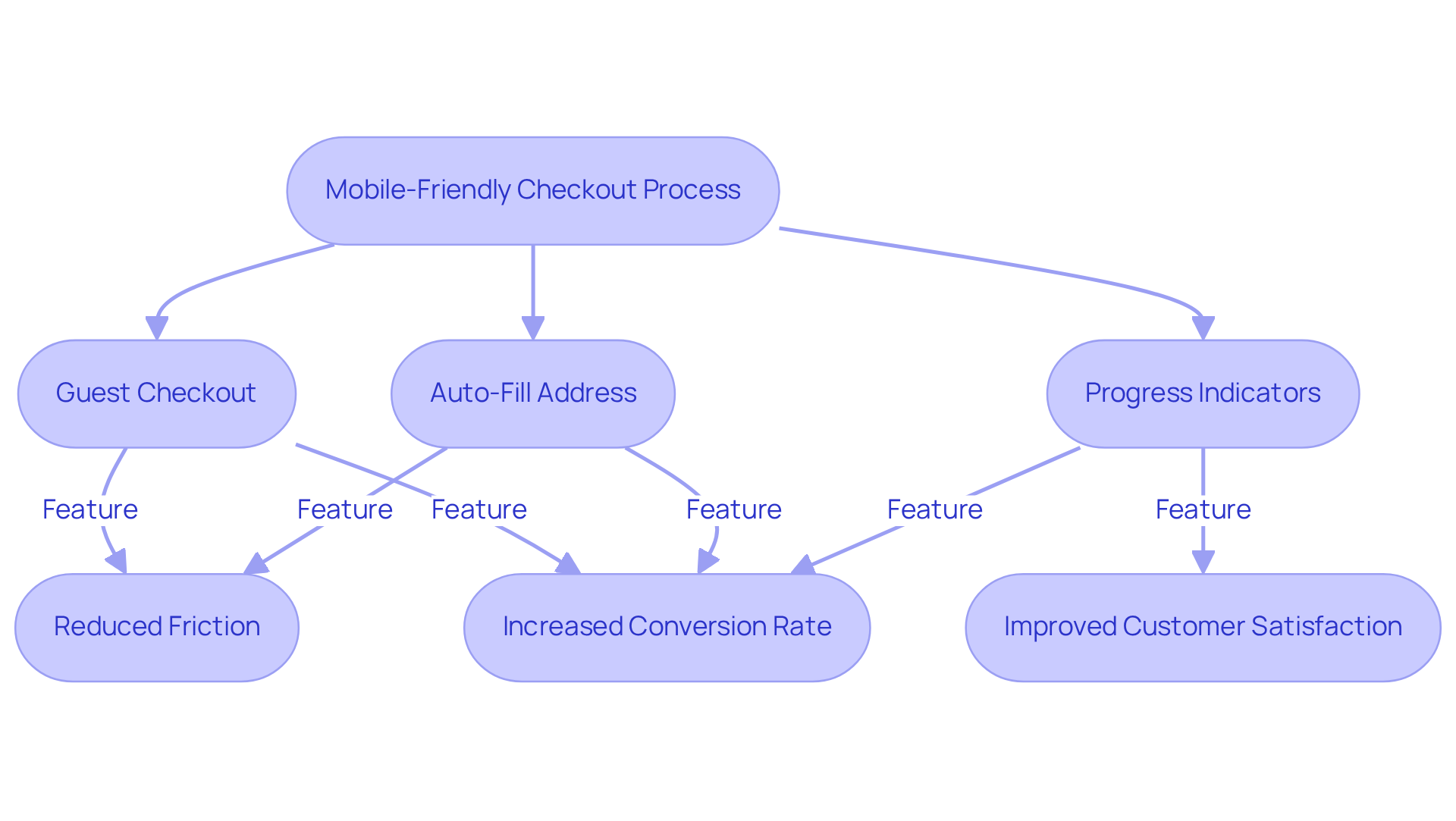
Personalization: Tailor Experiences to Individual Users
In the realm of ecommerce mobile applications, personalization has emerged as a crucial element for crafting engaging experiences. Many brands struggle to connect with their customers on a deeper level, often leading to missed opportunities for loyalty and satisfaction. By harnessing consumer data, brands can offer tailored product suggestions, personalized promotions, and customized content that truly resonate with their audience.
RNO1 understands this challenge and has developed innovative strategies, particularly through the Ryde initiative. This approach not only scales omnichannel brand ambassador programs but also nurtures influencer partnerships, creating a community where customers feel valued and heard.
As clients engage with community-driven content and influencer interactions, they develop a stronger connection to the brand, which enhances their overall experience. Ultimately, this method not only but also encourages repeat purchases, fostering a sense of belonging and involvement.
At RNO1, we are committed to helping brands navigate these complexities, ensuring that every customer feels appreciated and connected.

Diverse Payment Options: Cater to Customer Preferences
In the realm of ecommerce mobile applications, varied payment methods present a significant challenge. Many brands struggle to offer the range of options that consumers now expect. When shoppers encounter a lack of their preferred payment method, it can lead to frustration and ultimately, cart abandonment. In fact, research reveals that 28% of shoppers abandon their carts if their preferred payment method is unavailable. This statistic highlights the critical need for brands to embrace a variety of payment options. By integrating credit cards, digital wallets, and buy-now-pay-later (BNPL) solutions, businesses can cater to a broader audience and enhance the overall user experience.
Imagine the relief of a shopper who finds their preferred payment method readily available. This flexibility not only nurtures a positive shopping experience but can also significantly reduce cart abandonment rates—by as much as 10%. As consumers increasingly prioritize convenience and security, the presence of diverse payment options can lead to impressive conversion rates. Online stores that feature multiple express checkout options often achieve conversion rates as high as 67%, compared to just 54% for those with only one option.
Looking ahead to 2025, we can anticipate that innovative payment methods, such as biometric payments and cryptocurrencies, will become more prevalent. This evolution will further shape the landscape of commerce through ecommerce mobile applications. By prioritizing payment flexibility, brands can not only enhance client satisfaction but also drive sales growth. Together, let’s embrace the , ensuring that every shopper feels valued and understood.

High-Quality Product Images: Improve Visual Appeal
High-quality product images are essential for enhancing the visual appeal of ecommerce mobile applications. When individuals encounter , they can better understand the products, which significantly boosts their confidence in making purchasing decisions. Many of us have felt that uncertainty when shopping online, haven’t we?
Research shows that:
- 75% of online shoppers rely on product photos to inform their choices.
- 90% prioritize photo quality over other factors.
This highlights a common challenge: without appealing visuals, potential buyers may hesitate. To address this, it’s essential to implement best practices in product photography. By utilizing:
- Natural lighting
- Showcasing products from multiple angles
- Ensuring high-resolution images
we can dramatically improve user engagement. Imagine browsing a site where every product looks inviting and trustworthy! Additionally, features like 360-degree views can increase potential buyers' online duration by 32% to 50%, further enhancing the shopping experience and potentially leading to higher sales.
By focusing on these strategies, online retail businesses can create engaging visual material that not only boosts sales but also lowers return rates, ultimately fostering increased client satisfaction. Together, let’s embrace these tactics to create a more fulfilling shopping experience for everyone.
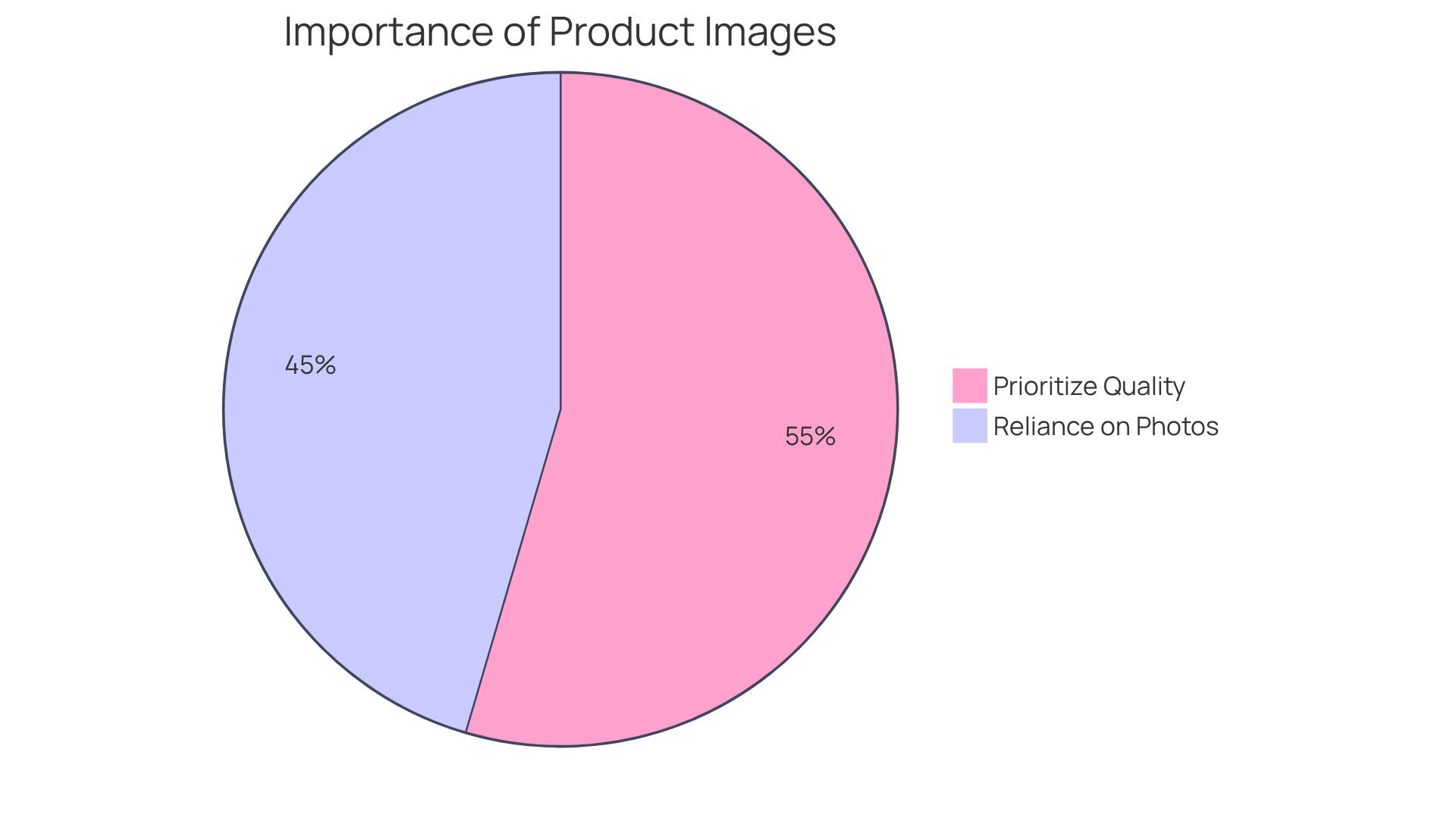
Engaging Product Descriptions: Drive Sales Through Content
Engaging product descriptions are essential for driving sales within ecommerce mobile applications, but many brands struggle to connect with their audience. This disconnect can lead to missed opportunities, as consumers often overlook products that fail to resonate with their needs and emotions. By clearly outlining the features, benefits, and unique selling points of products, brands can capture consumer interest and encourage purchases.
Utilizing not only makes descriptions more relatable but also fosters an emotional connection with potential buyers, significantly influencing their purchasing decisions. Research indicates that compelling narratives can lead to a 60% increase in purchase likelihood, underscoring the importance of well-crafted product descriptions in shaping consumer behavior.
Moreover, marketing experts emphasize the importance of focusing on benefits rather than just features. As one expert wisely noted, "When writing product descriptions, it’s essential to focus on the benefits rather than just listing features." This approach not only promotes trust and credibility but also enhances the attractiveness of products to clients.
Additionally, incorporating relevant keywords within these narratives boosts search engine visibility, with optimized descriptions capable of producing 30% more search traffic. By combining storytelling with SEO techniques, brands can create captivating content that not only drives sales but also nurtures lasting connections with clients.
Furthermore, leveraging user-generated content can enhance storytelling and build trust, further encouraging potential buyers to engage with the brand. Together, these strategies create a supportive environment where consumers feel valued and understood.
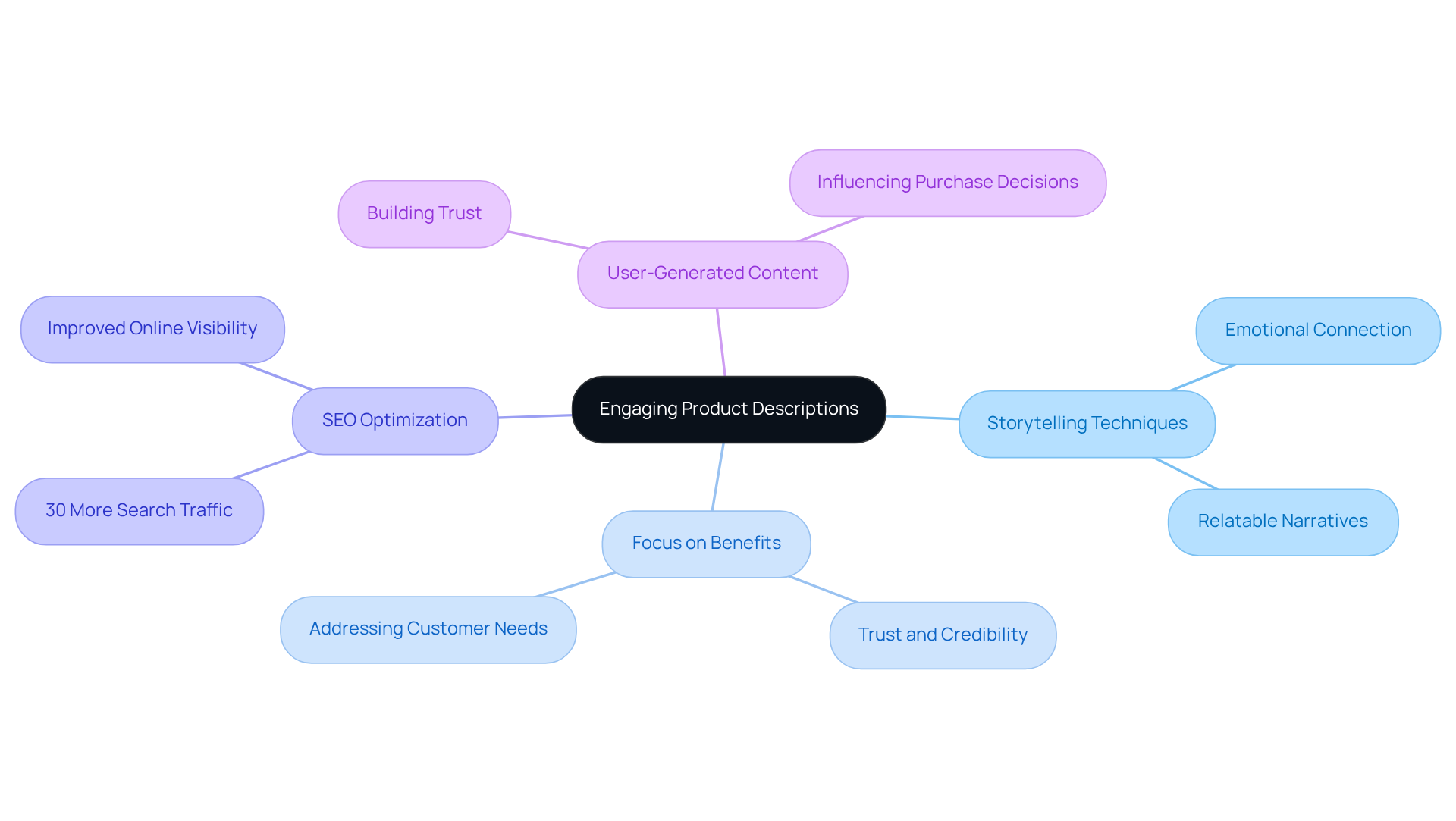
Customer Reviews: Build Trust and Credibility
Customer reviews play a vital role in building trust and credibility within ecommerce mobile applications. It's a common concern that many consumers face: how can they be sure they are making the right purchasing decision? Positive reviews serve as social proof, greatly influencing these choices. In fact, a staggering 93% of consumers acknowledge that reviews impact their buying behavior. Furthermore, 66% of US consumers often find themselves swayed by reviews during their shopping journey.
To address this, businesses can take proactive steps to and prominently display these reviews within their ecommerce mobile application. Simple strategies, like sending personalized prompts after a purchase, can significantly boost review submissions. Additionally, showcasing detailed feedback, including photos, enhances authenticity and fosters greater consumer confidence.
Industry insights reveal that:
- 70% of consumers are more inclined to trust a business with numerous positive reviews.
- 55% would only consider a business with a star rating between 4 and 5 stars.
This underscores the importance of cultivating a strong review base. By prioritizing client feedback and maintaining transparency, online retail brands can not only enhance their reputation but also drive sales and nurture long-term loyalty from patrons.
It's also essential to address consumer concerns—after all, 75% of consumers worry about encountering fake reviews online. By engaging with customers and responding to their feedback, businesses can build trust and encourage more positive interactions.
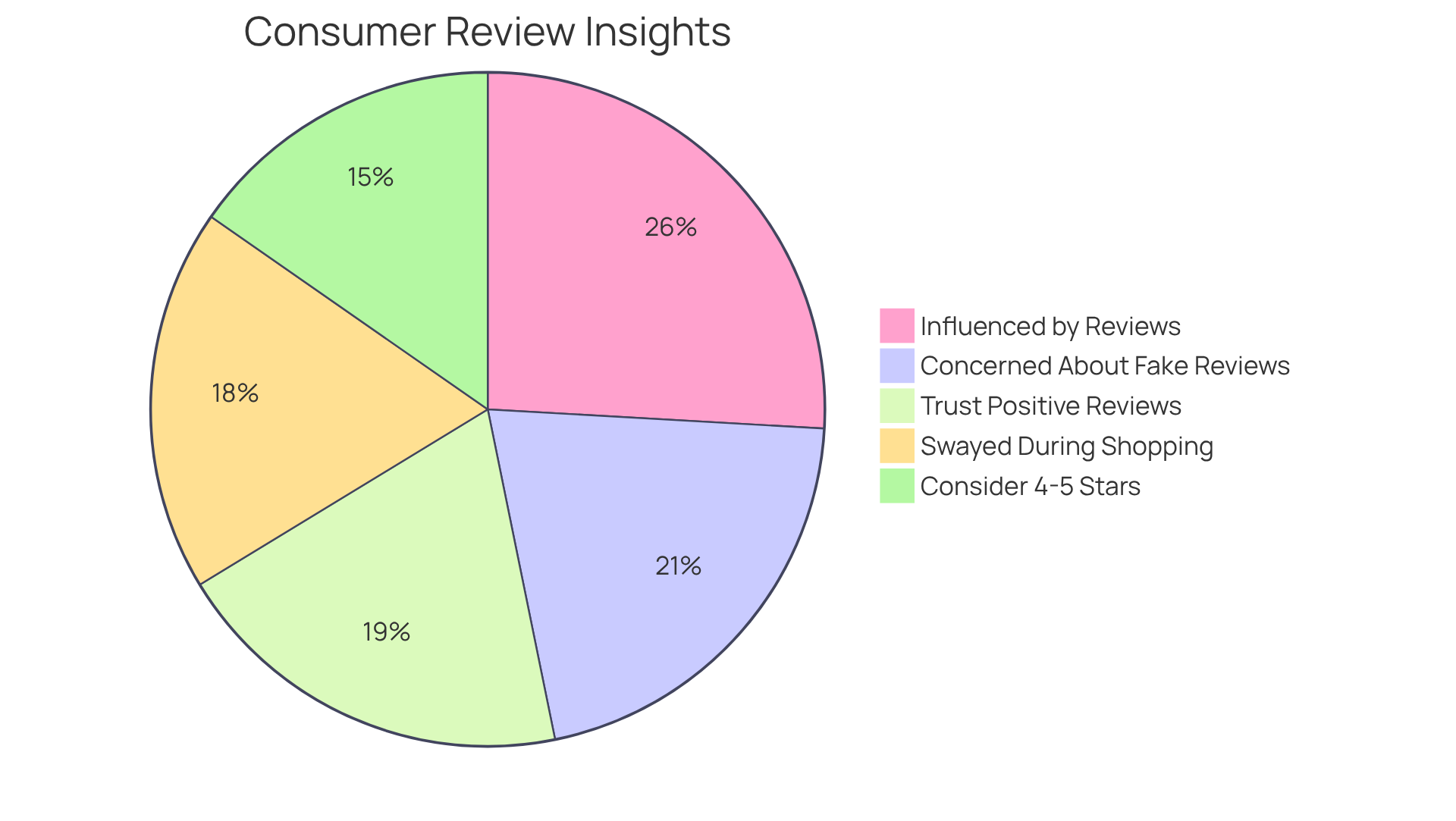
Push Notifications: Keep Users Engaged
In the realm of ecommerce mobile applications, maintaining engagement can often feel like a daunting challenge. Many brands struggle to keep users returning, and this can lead to feelings of frustration and concern about growth. The reality is, without effective communication, users may drift away, missing out on exciting promotions and new products tailored just for them.
However, there is a nurturing solution available: push notifications. By sending timely updates about promotions, new products, and personalized offers, brands can gently encourage users to revisit their apps. Imagine the joy of receiving a tailored message that speaks directly to your interests—this is the power of strategic push notifications.
When these notifications are thoughtfully designed for marketing, UX, and sales teams, they can significantly . By focusing on segmentation and personalization, online retail firms can create meaningful engagement strategies through their ecommerce mobile application that resonate with their target audiences. This not only fosters a stronger connection but also paves the way for growth and success.
Let’s embrace this opportunity together, nurturing our relationships with users and ensuring they feel valued and informed. After all, in this fast-paced digital landscape, a caring approach can make all the difference.
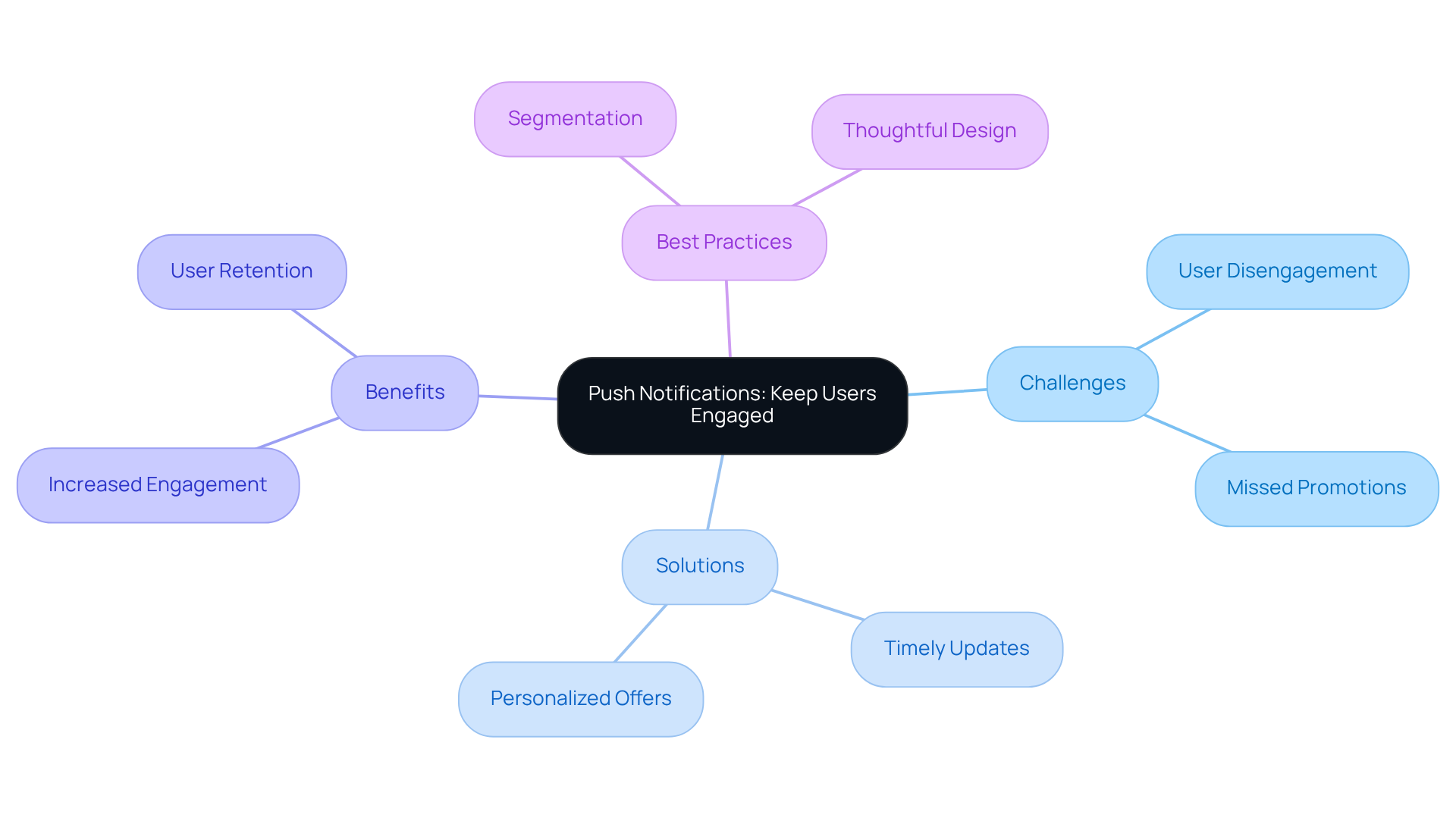
Live Chat: Enhance Customer Support and Satisfaction
In the fast-paced world of ecommerce mobile applications, users frequently encounter the frustrating issue of unanswered queries, which can result in cart abandonment. This situation can feel overwhelming, especially when they need immediate assistance.
Imagine a user, eager to complete their purchase, but left in the dark with no support. This is where live chat functionality steps in, offering a beacon of hope. By providing real-time assistance, users can swiftly resolve their concerns, transforming a potentially negative experience into a positive one.
This proactive support not only alleviates frustration but also fosters a deeper sense of loyalty and satisfaction with the brand. At RNO1, we understand the emotional journey of users and are committed to enhancing their experience through our ecommerce mobile application that provides compassionate and responsive support.
Together, we can create a nurturing environment that encourages users to with your brand.
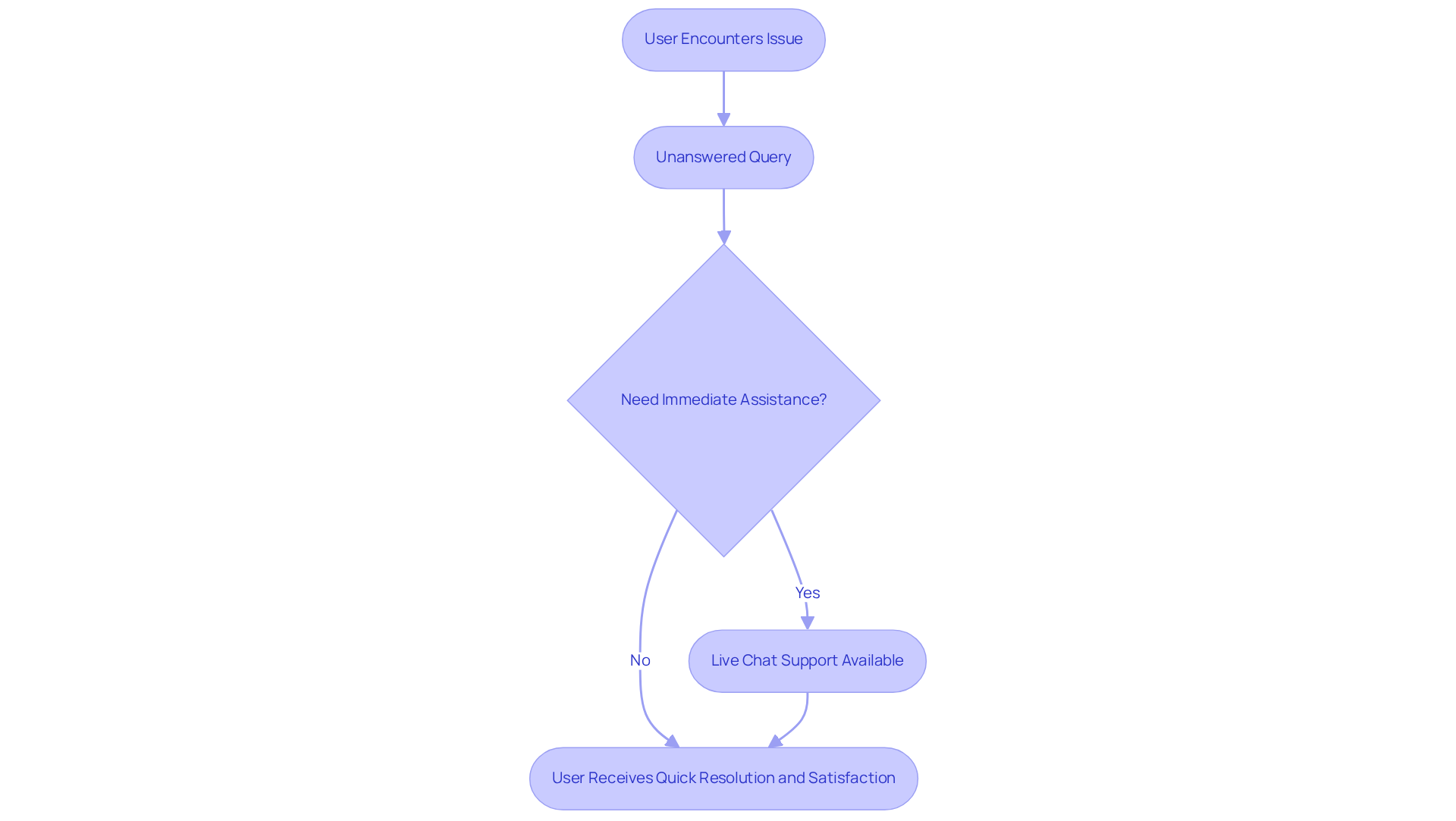
Conclusion
In the competitive landscape of online retail, many brands face the daunting challenge of developing a robust ecommerce mobile application to ensure their success. Fast load times, a mobile-friendly checkout process, personalization, diverse payment options, high-quality product images, engaging product descriptions, customer reviews, push notifications, and live chat functionality are essential features that significantly enhance user experience and drive conversions. These elements not only meet consumer expectations but also foster loyalty and satisfaction, ultimately positioning brands for sustainable growth in the digital marketplace.
Consider how frustrating it can be for customers when a website takes too long to load or when they encounter a complicated checkout process. These pain points can lead to abandonment and lost sales. The article highlights the critical impact of each feature, emphasizing that fast load times can reduce abandonment rates, a streamlined checkout process can increase conversion rates, and personalization can deepen customer connections. Furthermore, the importance of diverse payment options, high-quality visuals, and compelling product descriptions is essential for building trust and encouraging purchases. Engaging customers through push notifications and live chat further enhances their experience, ensuring they feel valued and supported throughout their shopping journey.
As the ecommerce landscape continues to evolve, embracing these key features will be vital for brands aiming to thrive. By prioritizing user experience and leveraging innovative strategies, businesses can create mobile applications that not only capture attention but also convert visits into sales. The journey toward developing an effective ecommerce mobile app is filled with opportunities to connect with customers on a deeper level. It is essential for brands to stay ahead of trends and focus on what truly matters: delivering exceptional value and experiences to their users. Together, let’s navigate this journey and create a supportive environment where both brands and customers can flourish.
Frequently Asked Questions
What is RNO1's approach to mobile app development for eCommerce?
RNO1 excels in crafting comprehensive mobile applications tailored for online retail businesses by combining innovative UX design, digital strategy, and web and app development. Their approach focuses on providing seamless shopping experiences and guiding brands from ideation to successful launch.
Why is expertise in eCommerce mobile application development important?
With portable devices projected to capture 78% of global e-commerce traffic, having expertise in eCommerce mobile application development is critical. These applications can generate up to seven times more revenue per individual and contribute to 40-50% of online sales for retail brands.
How does RNO1 ensure success for eCommerce mobile applications?
RNO1 emphasizes a results-oriented method that focuses on achieving quantifiable success through cooperative strategies. They prioritize client experience and optimize applications for engagement and conversion rates, positioning clients for sustainable growth in the competitive online marketplace.
What impact do load times have on eCommerce mobile applications?
Quick load times are essential as 53% of individuals abandon applications that take longer than three seconds to load, and 61% of smartphone owners won’t wait more than five seconds. Optimizing load times is crucial for enhancing user experience and retention.
What strategies can improve load times for eCommerce mobile applications?
Strategies to improve load times include optimizing images, minimizing HTTP requests, and implementing effective caching techniques such as utilizing service workers for Progressive Web Apps (PWAs) and edge caching with Content Delivery Networks (CDNs).
Why is a mobile-friendly checkout process important?
A mobile-friendly checkout process is crucial as it directly impacts conversion rates and client satisfaction. Simplifying the checkout experience can lead to a significant increase in conversion rates and help recover lost order revenue due to cart abandonment.
What features can enhance the mobile checkout experience?
Features that can enhance the mobile checkout experience include guest checkout options, auto-fill for address fields, and clear progress indicators to keep customers informed during their transaction.
What is the average cart abandonment rate for smartphone users?
The average cart abandonment rate for smartphone users is approximately 85.65%, highlighting the need for brands to address checkout challenges to minimize lost sales.
How can businesses reduce cart abandonment in mobile eCommerce?
Businesses can reduce cart abandonment by focusing on creating a smooth and user-friendly checkout process, understanding customer needs, and implementing features that minimize friction during transactions.




